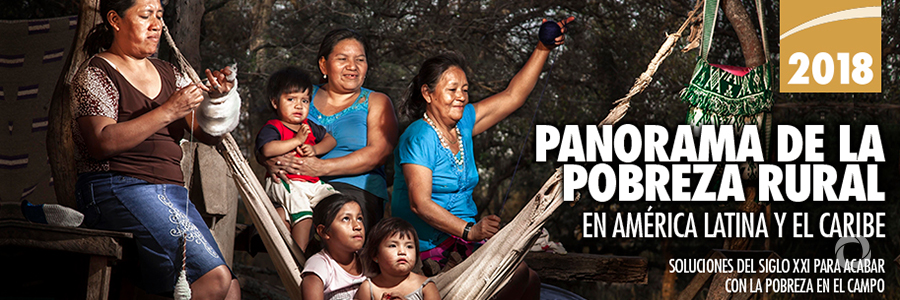Poverty in the rural areas of Latin America and the Caribbean has increased for the first time in a decade, says a new FAO publication presented on November 22 during the Week of Agriculture and Food held in Argentina’s capital.
The first edition of the Panorama of Rural Poverty in Latin America and the Caribbean warns of a historical reversal in the struggle to improve rural welfare in the region.
Rural poverty grew by two million people between 2014 and 2016, reaching a total of 59 million.
From 1990 to 2014, rural poverty in the region had fallen by almost 20 percentage points, from 65 percent to 46 percent of the relevant population. But between 2014 and 2016, both poverty and extreme poverty increased by two percentage points each, reaching 48.6 percent and 22.5 percent, respectively.
The last time the region endured a setback of this magnitude was due to the effects of the 2008 international financial crisis.
“We cannot tolerate that one of every two rural inhabitants is poor, and one in five, indigent. Worse still, we have suffered a historical reversal, a break in the trend that makes it clear that we are leaving our rural areas behind”, said Julio Berdegué, Regional Representative of the Food and Agriculture Organization (FAO) of the United Nations.
5 solutions for rural poverty
The FAO publication highlights five key measures to return to the path of poverty reduction.
The first is the need to create efficient, inclusive and sustainable agricultural sectors. This can be achieved by strengthening investment in public goods, increasing access to land, rural services and information, as well as improved management of risks in the agricultural sector.
The second key aspect is to extend social protection programmes for the rural population, designing schemes that promote synergies with the productive and especially the agricultural sectors.
A third fundamental factor is the sustainable management of natural resources. To this end, poverty reduction policies must be linked to environmental sustainability and promote the resilience of rural populations in the face of environmental and economic shocks.
The promotion of rural non-agricultural employment is the fourth measure highlighted by the Panorama: this requires fostering urban-rural linkages, private investment and the provision of basic infrastructure, the linking of agriculture with markets for goods and services, and the implementation of public programs in this area with its own budget and on a large scale.
Improving infrastructure is also essential for poverty-free rural areas: the FAO states that public investment in territorial assets should be increased and intensified, and infrastructure linked with associated public services.
Original source: FAO
Published on 21 November 2018

